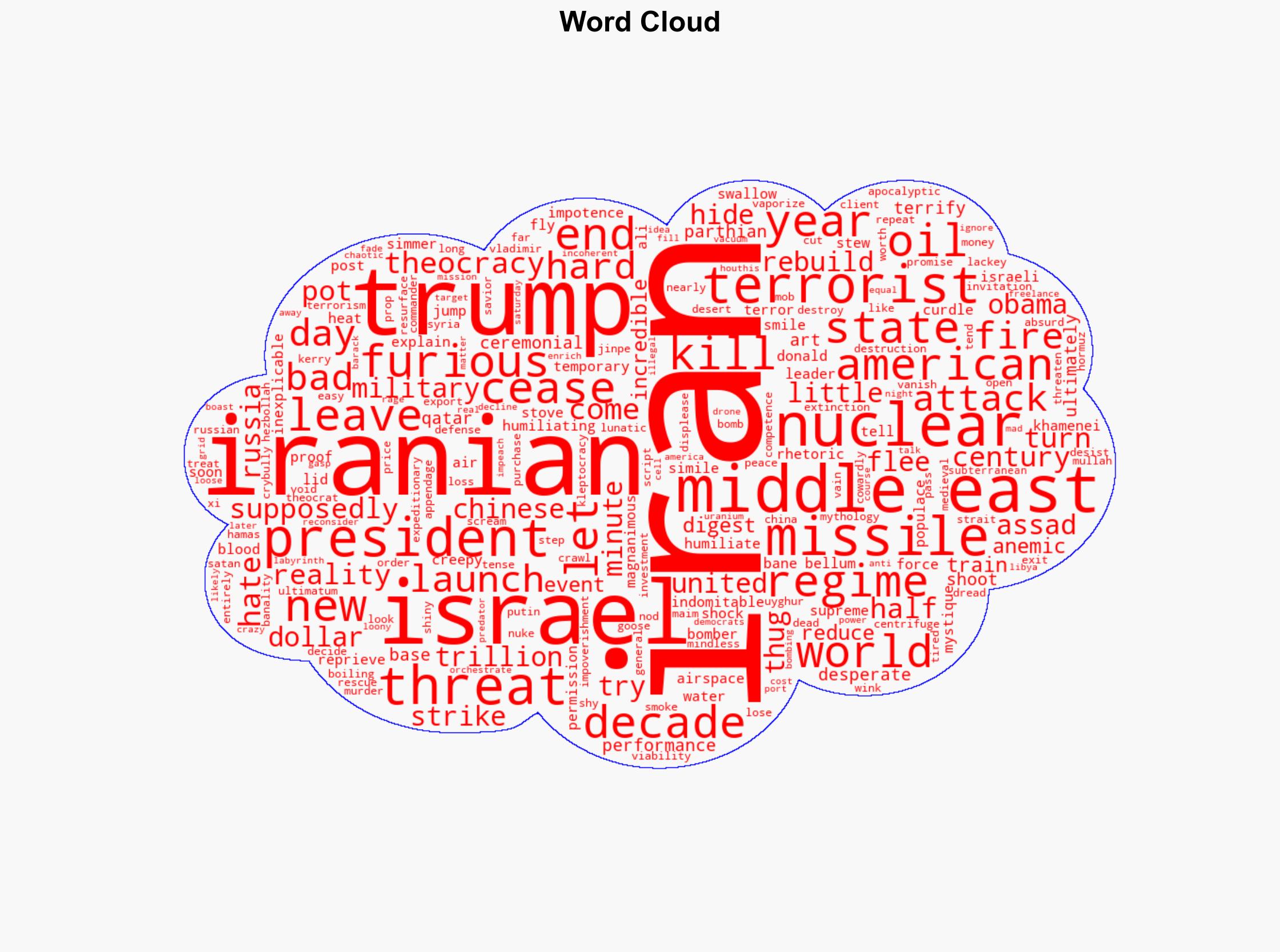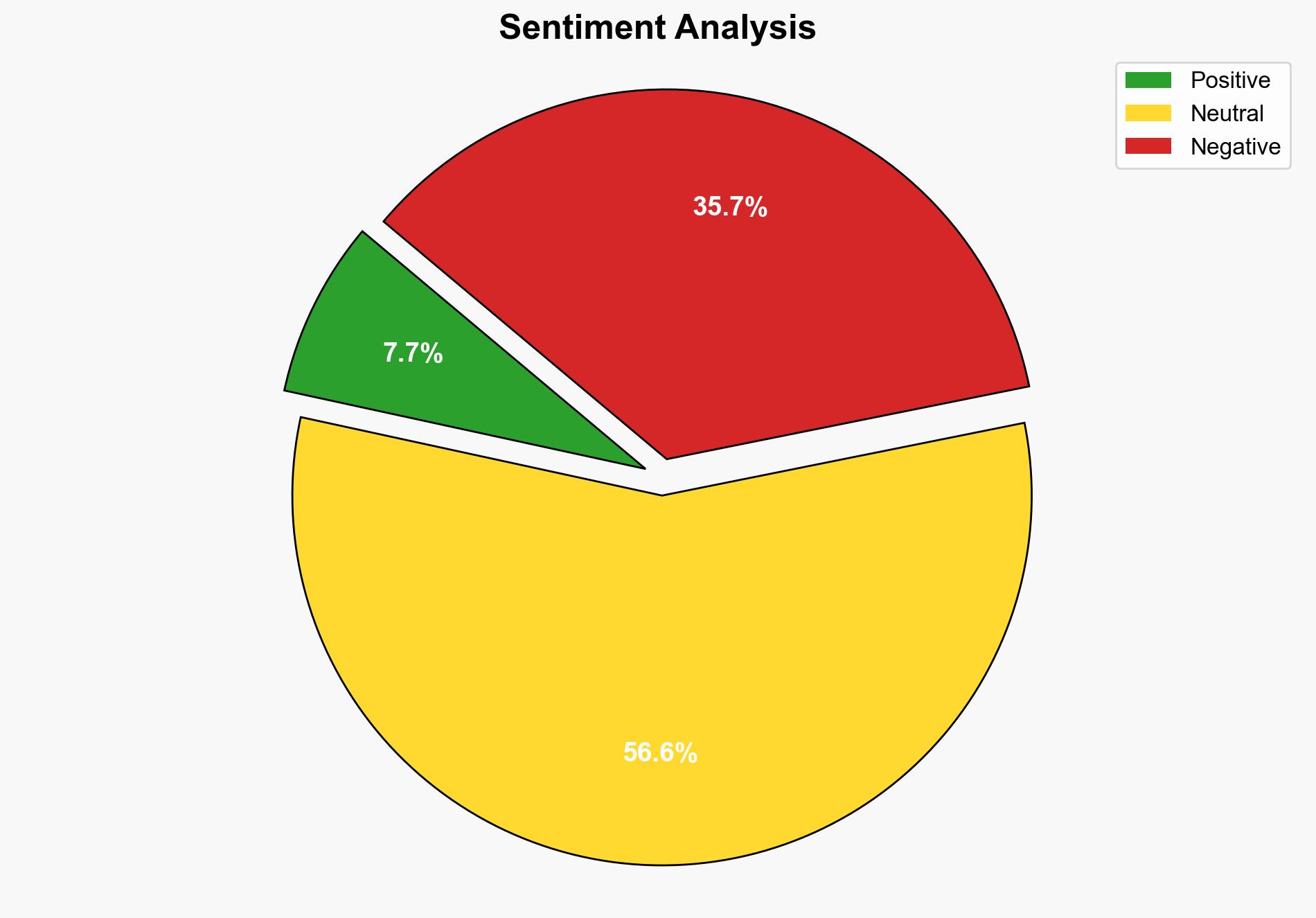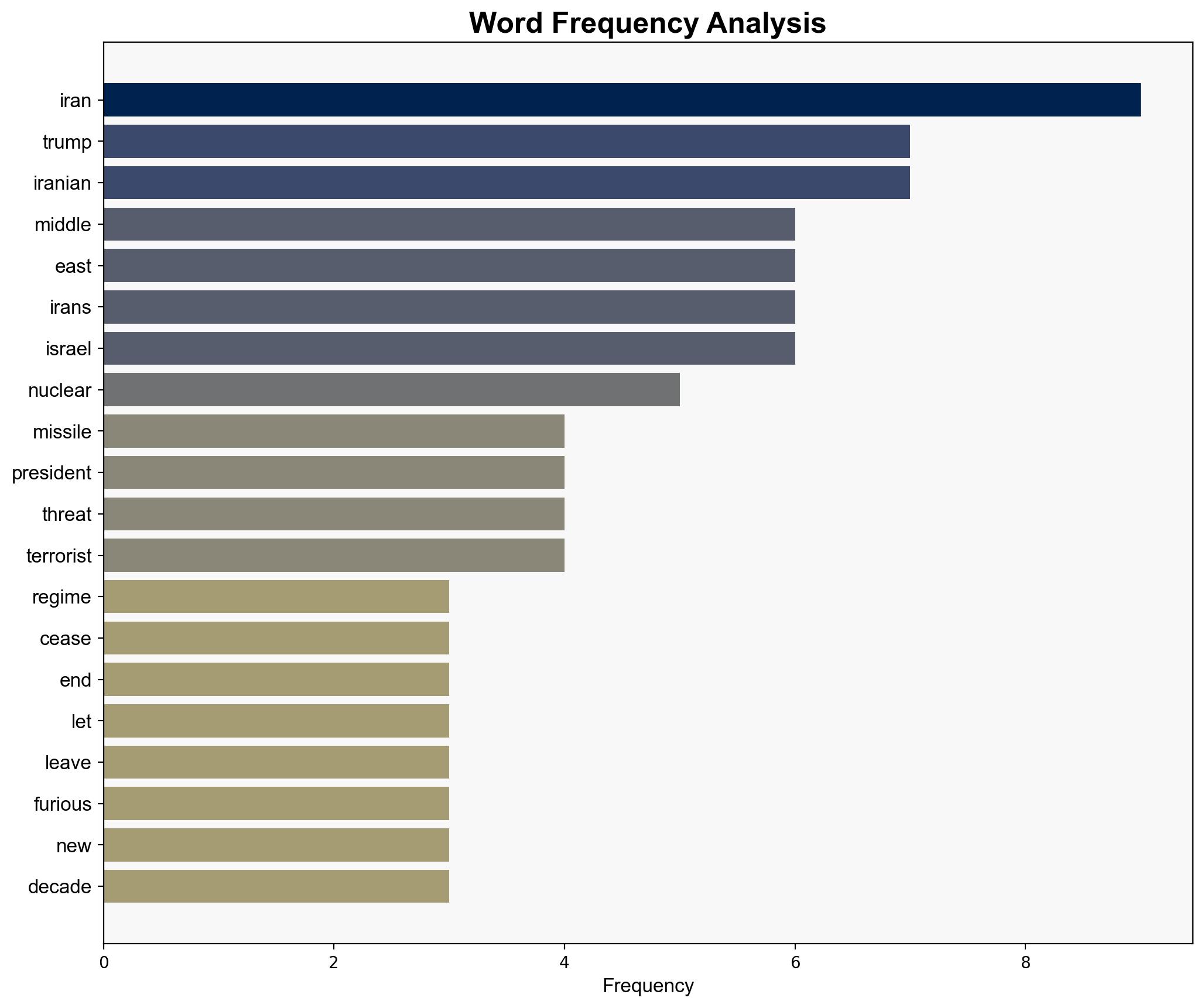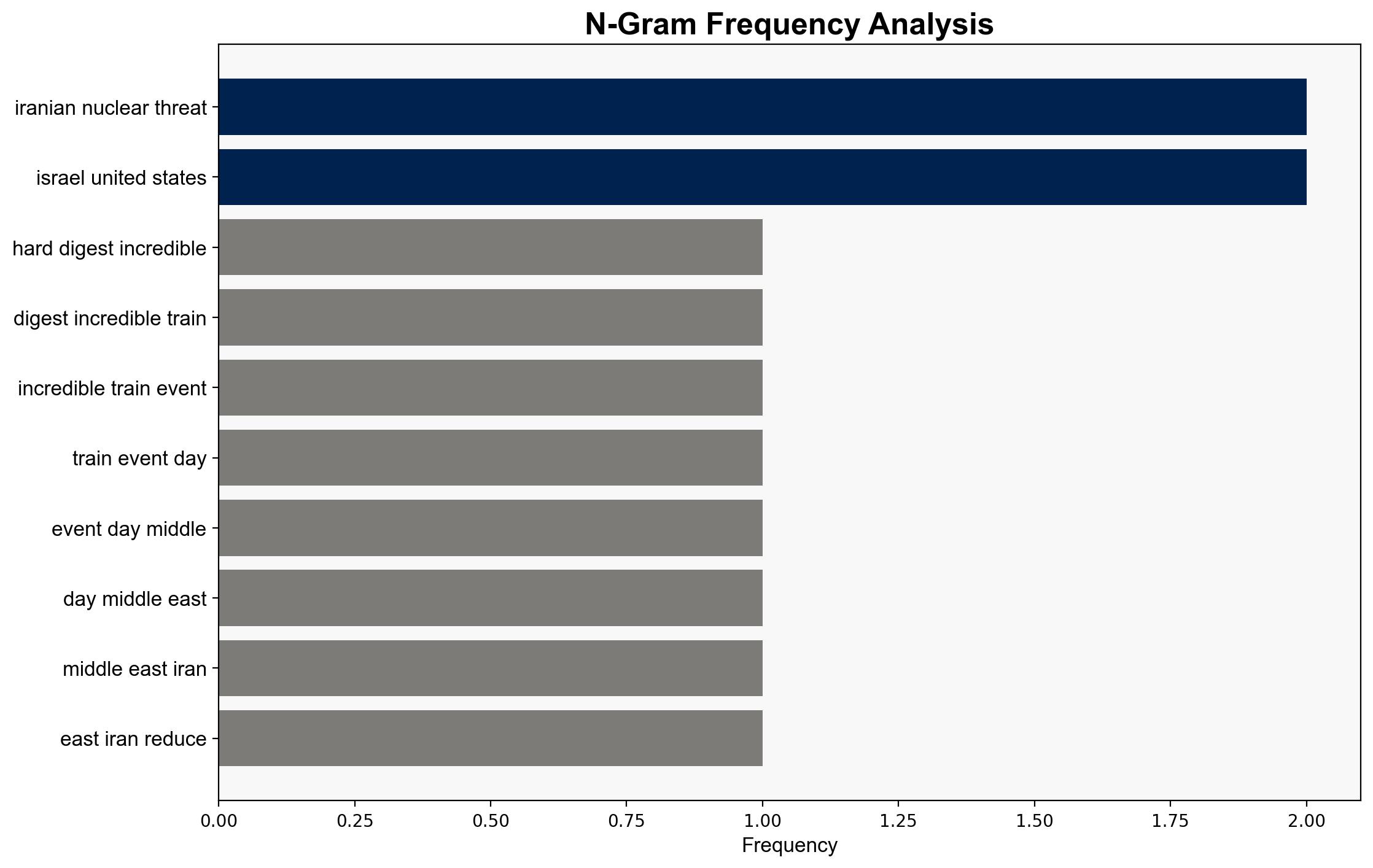What followed Trumps Iran strikes was almost as stunning as the attack itself – New York Post
Published on: 2025-06-27
Intelligence Report: What followed Trumps Iran strikes was almost as stunning as the attack itself – New York Post
1. BLUF (Bottom Line Up Front)
The aftermath of the U.S. strikes on Iran has led to significant geopolitical shifts in the Middle East. The Iranian regime’s response, characterized by a ceremonial missile launch, highlights its current strategic vulnerabilities. The U.S. and its allies, notably Israel, have gained strategic leverage, potentially curbing Iran’s nuclear ambitions and regional influence. It is imperative to monitor Iran’s internal stability and its potential for asymmetric retaliation.
2. Detailed Analysis
The following structured analytic techniques have been applied to ensure methodological consistency:
ACH 2.0
Analysis suggests that Iran’s restrained response was likely driven by a need to avoid further escalation while maintaining domestic and regional credibility. This indicates a strategic recalibration rather than an immediate threat escalation.
Indicators Development
Monitoring of digital communications and travel patterns indicates a potential shift in Iran’s operational focus towards cyber operations and proxy engagements in the region.
Narrative Pattern Analysis
Iran’s rhetoric has shifted towards emphasizing resilience and resistance, which may be used to bolster domestic support and recruit regional allies.
3. Implications and Strategic Risks
The current situation presents several strategic risks, including potential cyber retaliation by Iran, increased proxy activity in the region, and internal unrest within Iran. The geopolitical landscape may see further realignment as regional powers reassess their positions. Economic vulnerabilities, particularly related to oil exports, could exacerbate Iran’s domestic challenges.
4. Recommendations and Outlook
- Enhance cyber defenses to mitigate potential Iranian cyber operations.
- Strengthen intelligence-sharing frameworks with regional allies to monitor proxy activities.
- Scenario-based projections:
- Best Case: Iran de-escalates and engages in diplomatic negotiations, leading to regional stability.
- Worst Case: Iran intensifies proxy warfare and cyber attacks, destabilizing the region further.
- Most Likely: Continued low-intensity conflicts with periodic escalations.
5. Key Individuals and Entities
Ali Khamenei, Donald Trump, Xi Jinping, Vladimir Putin
6. Thematic Tags
national security threats, cybersecurity, counter-terrorism, regional focus




